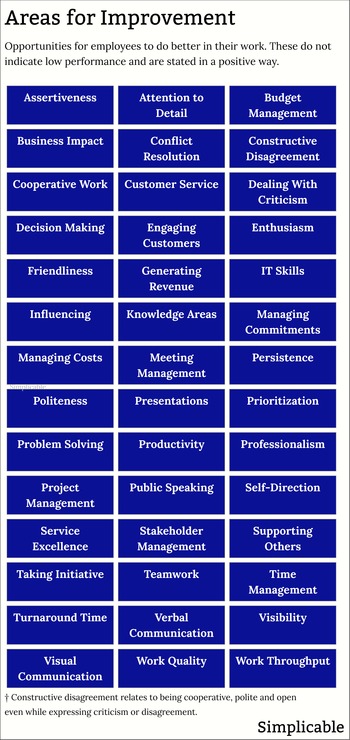
Antitrust Authorities | Auditors |
Board of Directors | Bondholders |
Business Customers | Business Units |
Clients | Community Leaders |
Consultants | Consumer Protection Agencies |
Consumers | Contractors |
Corporate Communications Teams | Creditors |
Customers | Distribution Partners |
Education Institutions | Emergency Services |
Employees | Environmental Agencies |
Environmental Groups | Executives & Managers |
Extended Workforce | Federal Government |
Financial Institutions | Financial Regulators |
Founders | Franchisees |
Freelancers | Health & Safety Regulators |
Human Resources | Industry Associations |
Industry Regulators | Information Technology Teams |
Institutional Investors | Intellectual Property Offices |
Internal Customers | International Customers |
Interns | Investment Partners |
Joint Venture Partners | Labor Departments |
Labor Unions | Law Enforcement Agencies |
Legal & Compliance Teams | Lenders & Debt Holders |
Local Businesses | Local Government |
Loyalty Program Members | Marketing & Sales Teams |
Marketing Partners | Media & Journalists |
Minority & Underrepresented Groups | Nonprofit Organizations |
Operations Teams | Outsource Partners |
Professional Service Partners | Quality Assurance Teams |
Research and Development Partners | Residents |
Retail Investors | Retired Employees |
Sales Partners | Securities Regulators |
Service Subscribers | Shareholders |
State Governments | Strategic Partners |
Subject Matter Experts | Subsidiaries |
Suppliers | Tax Authorities |
Technology Partners | Temporary Workers |
Trade & Customs Authorities | Users |
Vendor Personnel | Volunteers |
Wholesale Customers | Youth Organizations |
Investors
The owners of a business. Investors typically have a right to accurate and timely information such as regular financial statements. They may also have the right to approve or reject major decisions such as mergers & acquisitions.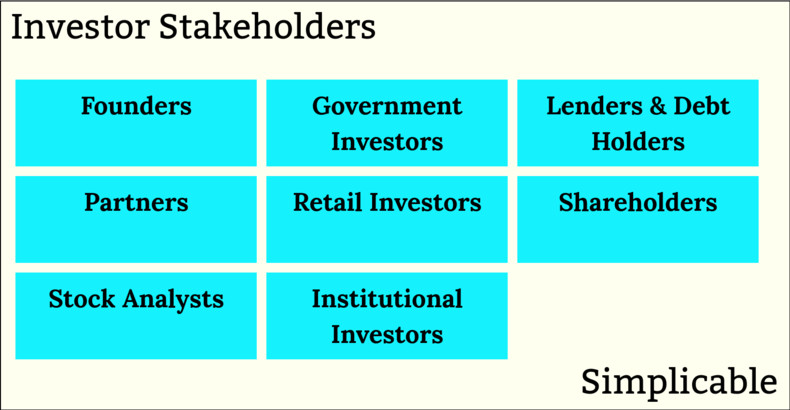
Creditors
The creditors of a business typically have rights such as access to accurate and timely financial information.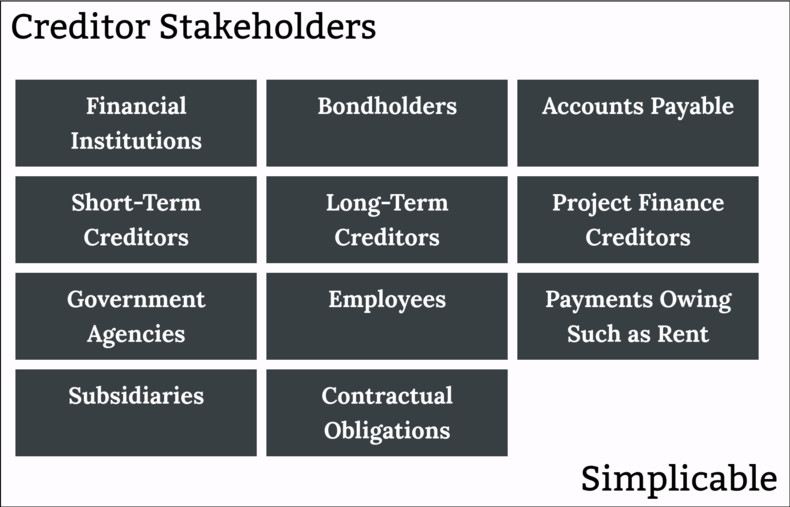
Communities
The communities that are impacted by your business. For example, your impact on the quality of life, environment and economy of a city.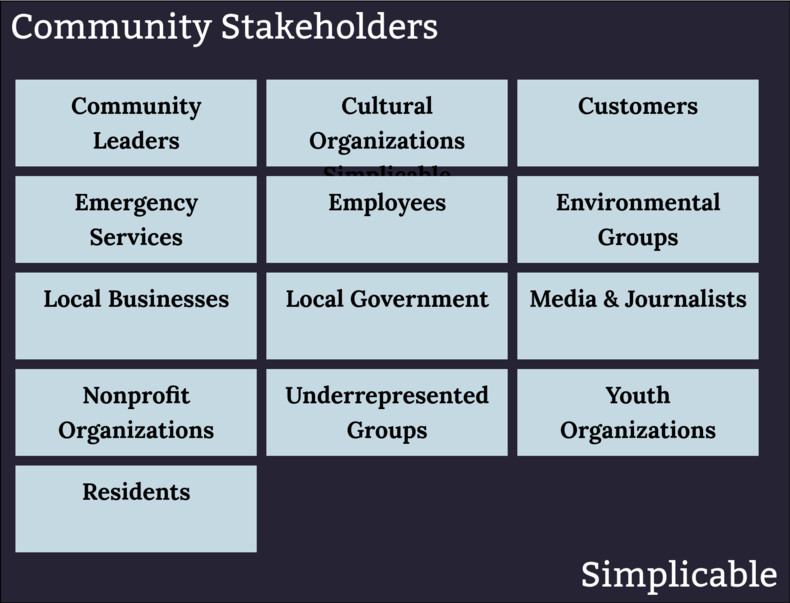
Employees
Employees and other individual contributors to your organization. This includes trade unions that may be informed and consulted about things such as worker safety. Employee stakeholders can also include anyone who does work on your behalf such that they resemble an employee.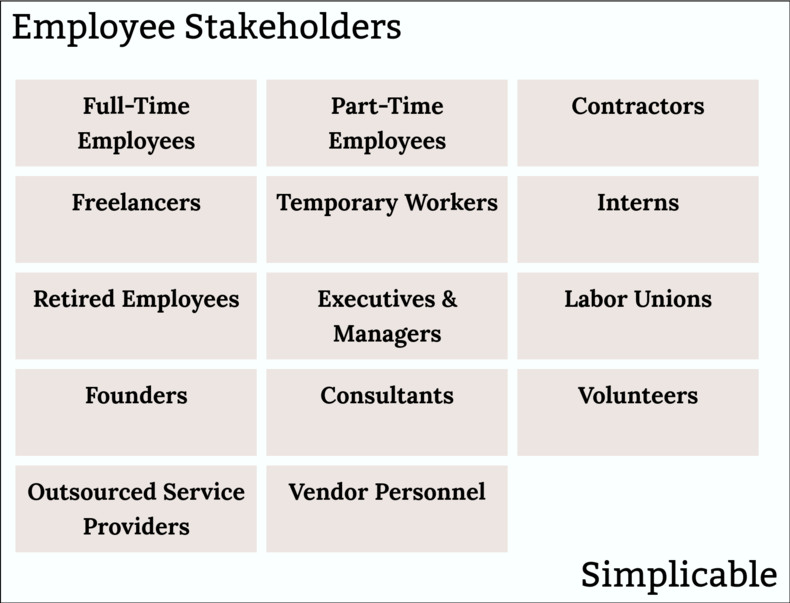
Governments
Government agencies such as regulatory bodies and tax authorities.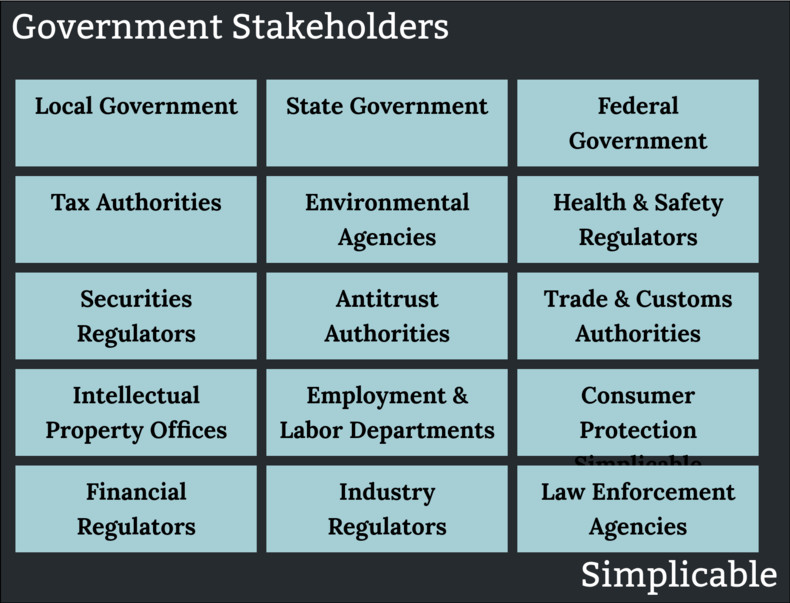
Partners
Partners including suppliers, consultants, industry partnerships, joint investments and initiatives.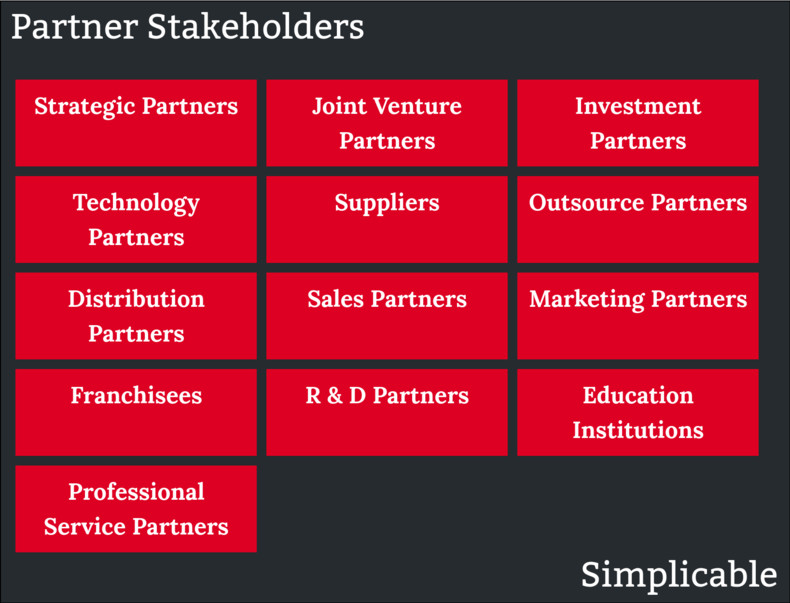
Customers
Customers who depend on your products and services.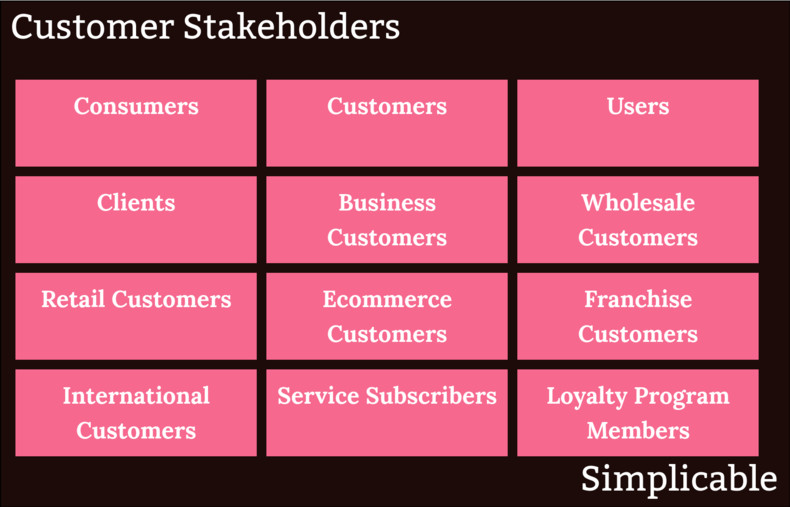
Internal Stakeholders
Internal stakeholders are stakeholders by virtue of their role in your organization.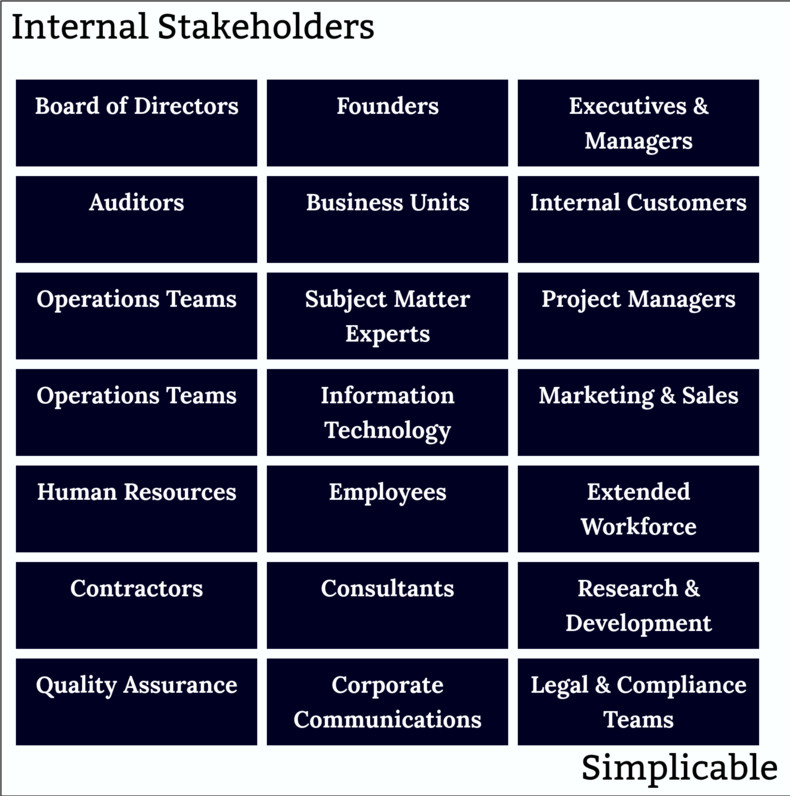
Summary
There are 8 types of stakeholder as follows.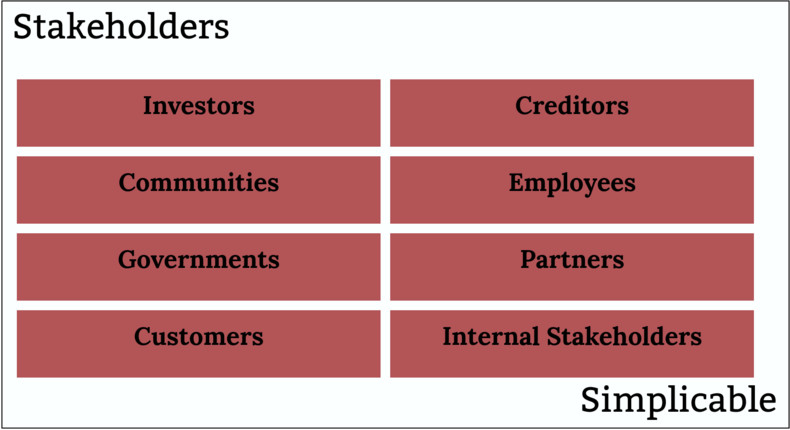
Notes
You would never typically consult all of the stakeholders above. Who you consult depends on what you are doing. For example, if you are renovating a coffee room, you might consult the managers and employees who work on that floor.| Overview: Stakeholders | ||
Type | ||
Definition | A person or organization that has an interest or concern in your business. | |
Related Concepts | ||








































